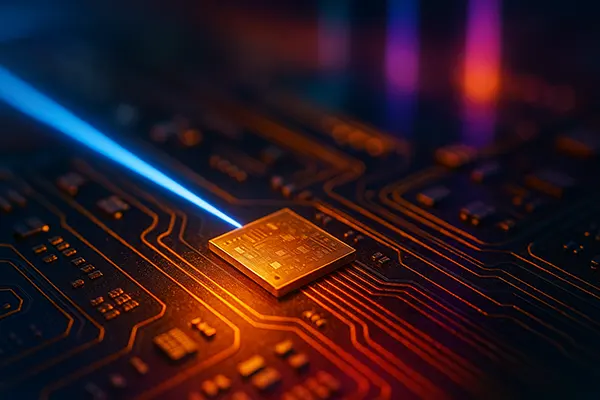Optical Computers: How Photon-Based Computing is Transforming AI Energy Efficiency

Artificial intelligence continues to evolve at an extraordinary pace, but its rapid progress comes with significant energy demands. Traditional semiconductor-based processors are reaching physical and thermal limits, pushing researchers to explore alternative computing methods. Optical computers—machines that calculate using photons rather than electrons—represent a transformative leap forward. Their ability to perform operations at the speed of light while drastically reducing energy consumption is redefining what’s possible in AI technology.
The Science Behind Optical Computing
At its core, optical computing relies on light instead of electricity to process information. Photons travel faster and can carry more data simultaneously through multiple wavelengths, making them ideal for high-volume parallel processing. Unlike electrons, which generate heat and resistance, photons pass through materials with minimal energy loss.
Modern optical chips are designed using silicon photonics and integrated waveguides that manipulate beams of light to execute logical operations. These photonic circuits can perform massive matrix multiplications—the backbone of AI algorithms—far more efficiently than traditional transistors. This leads to faster training of neural networks and improved real-time decision-making.
Leading research teams from the University of Oxford, MIT, and Imperial College London have demonstrated prototype optical processors capable of outperforming advanced GPUs in specific AI workloads. These early experiments confirm that light-based computing is not a theoretical concept, but an emerging reality with measurable advantages.
Photonics and Material Innovation
The progress in optical computing is closely linked to the development of new materials capable of guiding and controlling light at microscopic scales. Silicon photonics, indium phosphide, and lithium niobate are at the forefront of this revolution. Each material has distinct optical properties that enable faster modulation, lower latency, and enhanced signal integrity.
Researchers are also exploring nanophotonic crystals and metamaterials to create even smaller, more efficient light-processing components. These technologies are key to building compact, scalable optical chips that could one day replace or complement electronic processors in AI systems.
As these materials mature, manufacturers are finding ways to integrate them into existing semiconductor production lines, which could accelerate the commercialisation of optical computing technology worldwide.
Energy Efficiency and Sustainable AI
Energy consumption remains one of the most pressing challenges in AI development. Training large models such as GPT and image-recognition networks requires enormous computing power, often leading to substantial carbon footprints. Optical computing offers a sustainable alternative by eliminating electrical resistance and drastically reducing heat generation.
Photon-based processors consume up to 90% less power compared to traditional GPU-based systems, primarily because light does not generate waste heat in the same way electricity does. This means less energy is required for cooling, which further amplifies the total efficiency gains.
In addition, optical interconnects allow for faster data transfer between components, minimising bottlenecks and improving performance-per-watt. This makes optical AI systems ideal for data centres, edge computing, and other energy-critical environments where sustainability is a growing priority.
AI Applications Benefiting from Optical Computing
Optical computing is already influencing several practical AI applications. In healthcare, photon-based processors are accelerating genomic analysis and real-time medical imaging. These tasks involve processing vast datasets where speed and precision are critical.
Autonomous vehicles also benefit from optical computation. Photonic processors can interpret visual data streams almost instantaneously, allowing faster reaction times and safer decision-making in complex traffic environments. This speed is essential for sensor fusion and real-time navigation systems.
In finance and cybersecurity, optical AI systems enable near-instant pattern recognition and encryption processing, where milliseconds can determine success or failure. As AI models become larger and more complex, the ability to perform computations using light could prove indispensable.

Future Outlook and Global Development
While optical computers are still in their early stages, investment and innovation are accelerating globally. Companies like Lightmatter, Lightelligence, and PsiQuantum are leading the race to bring commercial photonic processors to market. Their designs promise exponential gains in computational power without the same environmental costs associated with traditional hardware.
Governments and research institutions are also recognising the strategic importance of optical computing. In 2025, the European Union’s “Photonics 2030” initiative aims to establish a sustainable ecosystem for optical technologies, supporting both academic and industrial research into light-based computation.
As these advancements continue, it’s becoming clear that the future of AI may depend not only on smarter algorithms but also on the light that powers them. Optical computing stands as a bridge between high performance and environmental responsibility, reshaping the foundation of artificial intelligence as we know it.
Challenges and Technological Barriers
Despite its potential, optical computing still faces several obstacles before large-scale adoption becomes feasible. One of the main issues is the integration of optical components with existing electronic infrastructure. Converting light signals to electrical ones without losing data fidelity remains a complex engineering challenge.
Another limitation lies in miniaturisation. Photonic chips, while energy-efficient, are currently larger and more difficult to mass-produce than silicon-based processors. Achieving the same level of compactness as electronic circuits requires breakthroughs in nanoscale manufacturing and design precision.
Nevertheless, researchers are optimistic. As fabrication techniques improve and demand for sustainable computing grows, these challenges are likely to be overcome. The combination of photonics and artificial intelligence could define a new era of computing—one that harnesses the pure speed and efficiency of light.



